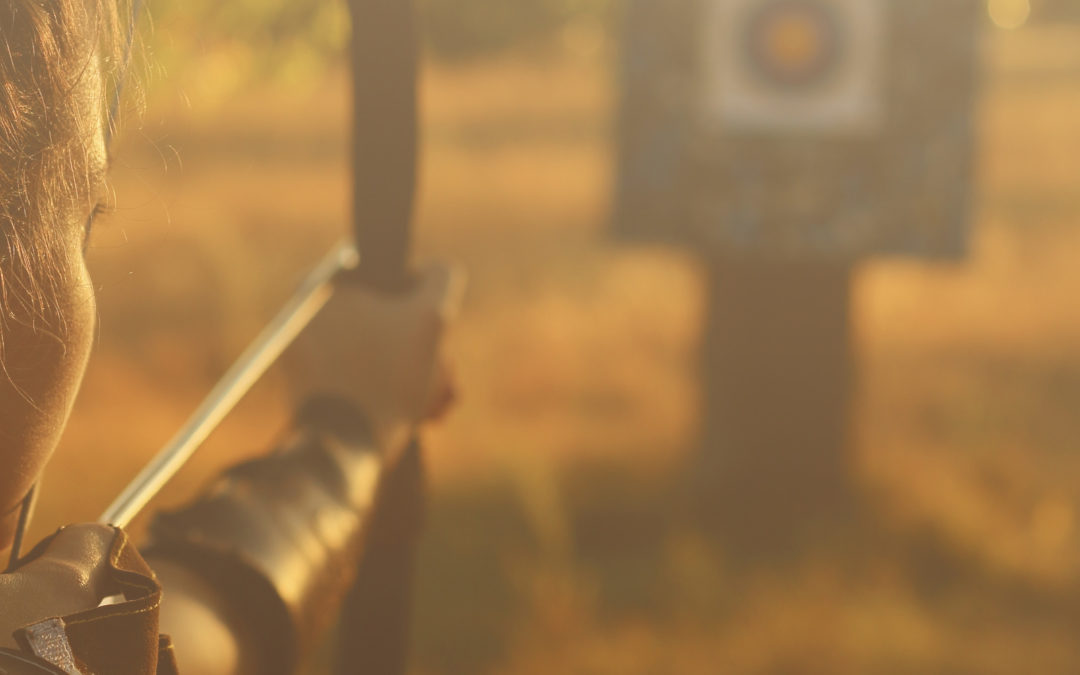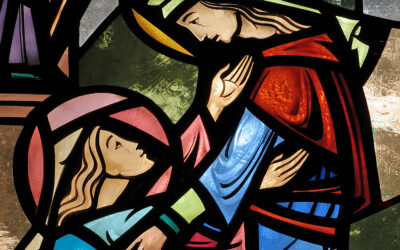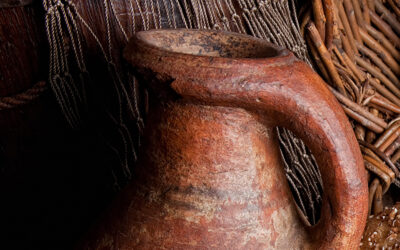by Julia Seymour–
It has been said that one needs 10,000 hours of practice to truly develop a skill and be considered an expert in one’s field. Let’s say that we don’t need to be faith experts, but we want to be proficient at demonstrating our faith traditions and talking about the shape of our trust in God. Perhaps 5,000 hours is enough for that.
If we attend weekly worship 50 times each year, for an average of an hour a service, we will have acquired 50 hours of practice. Let’s say we attend five to ten other services a year, about an hour apiece, and we will round up to 60 hours in worship every year. At that rate, we will be “proficient” at worship at the age of 83.
Consider that in any given year, we will say the Lord’s Prayer or the Apostles’ Creed about 60 times, slightly more than once a week. We may sing some hymns more than once, but others will rarely be in use. The Scriptures in the lectionary (a three-year rotation of selected readings that many congregations follow) will mostly only occur once each. There are a few exceptions, of course, including Psalm 23, certain festival texts and John 1.
THE MARK
While faith certainly can be practiced in settings outside of worship, and none of the things listed above specififically define our faith, the ability to recognize, recite and draw on them for strength is important for the sake of a faith-filled life. “Practice” is most often associated with sports and music. New Testament Greek offers us the word hamartia (ha-MAR-tee-uh), an archery term used for “missing the mark.” In Scripture, hamartia is the word that we often translate into English as “sin.” Thus, to sin is to miss the mark.
In order to reduce our hamartia, we practice and develop the muscles of faithful living. Missing the mark often hurts others and the world that God has made, so improving our spiritual aim is essential. Considering this also brings us to the amount of time we spend with others in our faith communities, as well as our individual devotional work, which hones our trust in our Creator.
Archery requires equipment maintenance, aiming, physical strength, patience and repetition. In order to be a successful archer, whether for hunting or target shooting, one must know how to check arrows for straightness and soundness. Bow tension must be tested. Quivers must be prepared. One’s bow arm must be in good shape and steady, as well as the arm that draws back the arrow. Hunting and safety regulations must be familiar. Repetition in all these things, through practice, creates both habit and ritual.
Anyone who has spent time around very young children knows about repetition. As a parent, I often feel I could be replaced by an electronic recording of certain phrases: “Please don’t touch people who don’t want to be touched.” “No means no.” “Where do shoes belong?” “Have you done your job?” “Are you helping or hurting?” “Softer voice inside, please.” In order to reduce missing the mark in instructing our children, we repeat, ad nauseum, the lessons we hope for them to learn. We check the arrows, string the bows, and aim—again and again—in an effort to help our children become proficient at striking the bullseye of social, emotional, psychological,
THE “WHATS” AND THE “WHYS”
Since our physical time in church is limited, we must put extra energy into developing the muscle memories of faith practice in community. Just as the practiced archer stretches back an arm toward her quiver without thinking, we want habits of worship to be automatic and meaningful. For this to occur, we must first break down the shape of our rituals so that understanding forms. For children, indeed for most of us, all “whats” need “whys.”
The archer no longer thinks about the “what” of her arm movement to grasp a new arrow because she has already come to understand the “why.” A quiver keeps the arrows in their true shape, handy for reaching and convenient for carrying. She knows the why, and so the habit takes shape.
What do we want our children to do? When you approach the pastor for communion, make a little open boat with your hands. Your side-by-side hands or cupped palm make a manger for the body of Christ, the bread, to lie in as the pastor tells you that this is for you. If we understand why we extend our hands to receive the bread, it makes the “what” easier. This means that when we come to communion,
at best, we are thinking about the manger where the infant Jesus, God in the flesh, was laid. We are holding the truth that this was for us and for all people.
We are aware that we do not grasp Christ for ourselves, but that his body and blood are given to us by grace—not by our own reaching or clasping.
What seems like a simple act of receiving a bite of bread is actually a deeply powerful act, enriched by the symbolism and teaching of our faith tradition. Even if you attend a church where the bread is passed around in a loaf or on a tray, we still know what to do as we receive it. There are “whys” associated with all our community practices. If we remind our children of the “whys,” the “whats” sink in more and more deeply.
Why do we say these words? Because this is the prayer Jesus taught his disciples, and we are disciples too, so we pray with his words.
Why do we stand up so much? Standing up on our feet or sitting up straight in our seat is a way to honor the words of the Bible or the hymn or the prayers. When we say, “Peace be with you,” why do we shake hands with people? Because it shows our love for them. We are helping people see that we want to be at peace with one another, that we come to Jesus’ table as a family in God, without hard feelings or resentment.
If you do not know the “whys” yourself, ask your pastor. Look at Luther’s Small and Large Catechisms. Explore your denomination’s documents around worship, the sacraments, the Bible and worship spaces.
The more we teach our children and ourselves about the “whys” of our faith, the more able we are to live each day faithfully. The choices that God would have us make become available in our spiritual quiver. The Spirit strengthens us to draw back our bow of living as baptized children of God, enabling us to hit our mark, or close to it, for Christ’s own sake and for the sake of the world he loves.THE “WHATS” AND
THE “WHYS”
Since our physical time in church is limited, we must put extra energy into developing the muscle memories of faith practice in community. Just as the practiced archer stretches back an arm toward her quiver without thinking, we want habits of worship to be automatic and meaningful. For this to occur, we must first break down the shape of our rituals so that understanding forms. For children, indeed for most of us, all “whats” need “whys.”
The archer no longer thinks about the “what” of her arm movement to grasp a new arrow because she has already come to understand the “why.” A quiver keeps the arrows in their true shape, handy for reaching and convenient for carrying. She knows the why, and so the habit takes shape.
What do we want our children to do? When you approach the pastor for communion, make a little open boat with your hands. Your side-by-side hands or cupped palm make a manger for the body of Christ, the bread, to lie in as the pastor tells you that this is for you. If we understand why we extend our hands to receive the bread, it makes the “what” easier. This means that when we come to communion,
at best, we are thinking about the manger where the infant Jesus, God in the flesh, was laid. We are holding the truth that this was for us and for all people.
We are aware that we do not grasp Christ for ourselves, but that his body and blood are given to us by grace—not by our own reaching or clasping.
What seems like a simple act of receiving a bite of bread is actually a deeply powerful act, enriched by the symbolism and teaching of our faith tradition. Even if you attend a church where the bread is passed around in a loaf or on a tray, we still know what to do as we receive it. There are “whys” associated with all our community practices. If we remind our children of the “whys,” the “whats” sink in more and more deeply.
Why do we say these words? Because this is the prayer Jesus taught his disciples, and we are disciples too, so we pray with his words. Why do we stand up so much? Standing up on our feet or sitting up straight in our seat is a way to honor the words of the Bible or the hymn or the prayers. When we say, “Peace be with you,” why do we shake hands with people? Because it shows our love for them. We are helping people see that we want to be at peace with one another, that we come to Jesus’ table as a family in God, without hard feelings or resentment.
If you do not know the “whys” yourself, ask your pastor. Look at Luther’s Small and Large Catechisms. Explore your denomination’s documents around worship, the sacraments, the Bible and worship spaces.
The more we teach our children and ourselves about the “whys” of our faith, the more able we are to live each day faithfully. The choices that God would have us make become available in our spiritual quiver. The Spirit strengthens us to draw back our bow of living as baptized children of God, enabling us to hit our mark, or close to it, for Christ’s own sake and for the sake of the world he loves.
The Rev. Julia Seymour serves Lutheran Church of Hope in Anchorage, Alaska. Julia lives with her husband, their two children and their dog.
This article is from the May 2019 issue of Gather magazine. To read more like it, subscribe to Gather.
More like this:
Seen. Heard. Welcomed.
Do you ever go to church hoping you have enough snacks and “stuff” to keep your child quiet and occupied throughout the worship service? Many of us are familiar with the stigmatizing saying that children “should be seen and not heard,” in places that often include...
Redeeming grace
Coupons, rainchecks and rebates were my dad’s way of saving money on groceries and other household items. Because of this, even as a young child I understood what “redeeming” meant. Dad redeemed coupons a little like he played cards. He knew just what coupon to play,...
Holding to God’s promise
When my husband, Joe, and I moved into our first house In May 2014, we spied squash vines growing along a wooden fence next to our driveway. Being new homeowners—and not exactly avid gardeners—we decided to let the vines grow and see what would result. That June, to...
Who dies by suicide?
By Elise Seyfried Statistics indicate that a person who dies by suicide is most likely to be a white or Native American male, aged 55 to 75. Men are three times more likely than women to die by suicide. But statistics don’t tell a complete story. Deaths of despair...
Take the first step
Help create a safer world for kids. Did you know that the number of children and teens killed by gunfire in the United States increased 50 percent between 2019 and 2021, and that gun violence became the leading cause of death for U.S. children and teens in 2020? The...
Emergence
By Elise Seyfried SOMETIMES, DURING WORSHIP, we are asked to remember our baptism. We watch the welcome of a little one at the font. We listen to a confirmand’s words during the Affirmation of Baptism. I must confess: These are not my favorite parts of the liturgy. I...
What critters teach us about faith
God wants us to take care of our world. My young son Richard showed me that years ago when he found a wounded bird, a Robin, in our backyard. He named it “John”. Richard ran in and said we had to save him. His dad and I realized that this Robin was one of God’s...
Blue Christmas: Surviving the holiday hype
Not everyone enjoys the holidays. For some of us, this time of year dredges up fresh waves of grief over our loved ones who are no longer with us. Some worry about pulling off a picture-perfect celebration or the effect seasonal shopping marathons have on their...
Go-to places for sacred spaces
By Kathryn Haueisen— I’m embarrassed about how many times I’ve changed my address. Sometimes I’ve moved within the same zip code or to a nearby one. Many times, I have moved far enough that I’ve had to change pretty much every detail of daily life. Whenever that...
Sing out loud
By Karen Wright Marsh THE REFORMER MARTIN LUTHER (1483-1546) gave out a great deal of advice, much of it documented in his 3,000 letters to parishioners, friends and family members, princes and commoners. Topping the pastor’s “Don’t” list: lying late abed, gluttony,...
The blessings of a nap
By Elise Seyfried WHEN I WAS YOUNG, I spent a lot of time with my dad’s mom, my beloved Nana. Nana would rent a cottage at the New Jersey shore for the whole summer and invite our family down for weeks at a time. It was a welcome respite from the brutal New York City...
All in good time
What I love about Ecclesiastes by Anne Basye MY MOM KEEPS A TO-DO LIST. It shows everything she is going to do the rest of her life. When my son wrote these words in a long-ago grade school essay, I was pleased... and uneasy. His assignment was to recommend me for a...
Dandelions
The miraculous in the common by Jennifer Grant THE GROUNDSKEEPERS have just mowed the park. Walking across the meadow, I kick at thick, matted clumps of grass. Then I spy, a few feet ahead of me, a lone dandelion standing up straight. About six or seven inches tall,...
Rocking chair prayers
Sacred time at the back of the sanctuary by Kimberly Knowle-Zeller Rejoice always, pray without ceasing, give thanks in all circumstances, for this is the will of God in Christ Jesus for you. —1 Thessalonians 5:16‑18 Excerpted from The Beauty of Motherhood:...
And why has this happened to me?
The visit of Mary to Elizabeth by Audrey Novak Riley MARY SET OUT AND WENT WITH HASTE to Elizabeth. When Elizabeth heard Mary’s greeting, she was filled with the Holy Spirit and exclaimed with a loud cry, “Blessed are you among women! And why has this happened to me,...
The hour is coming . . .
Jesus said it is now by Lindsay Hardman Freeman Sir, you have no bucket, and the well is deep. Where do you get that living water? John 4:11 SO SAYS THE SAMARITAN WOMAN—a skeptical, assertive, bright soul— who argues with Jesus as do few others in the Bible. Authentic...
Moms and miracles
by Elizabeth Hunter CAN YOU REMEMBER A TIME when a mom or another mother figure turned and gave you “the look”? That look may have communicated something like, I’m not worried about what you just said. And you are going to help me with this now. At the wedding at Cana...
Breathe on us
Jesus overcomes all barriers.. by Angela !Khabeb YOU ARE PROBABLY FAMILIAR with the story of “Doubting Thomas.” Thomas is a man on a journey of faith, known by a moniker that he did not really earn. Thomas is the person who basically tells the other disciples: “Let’s...




















